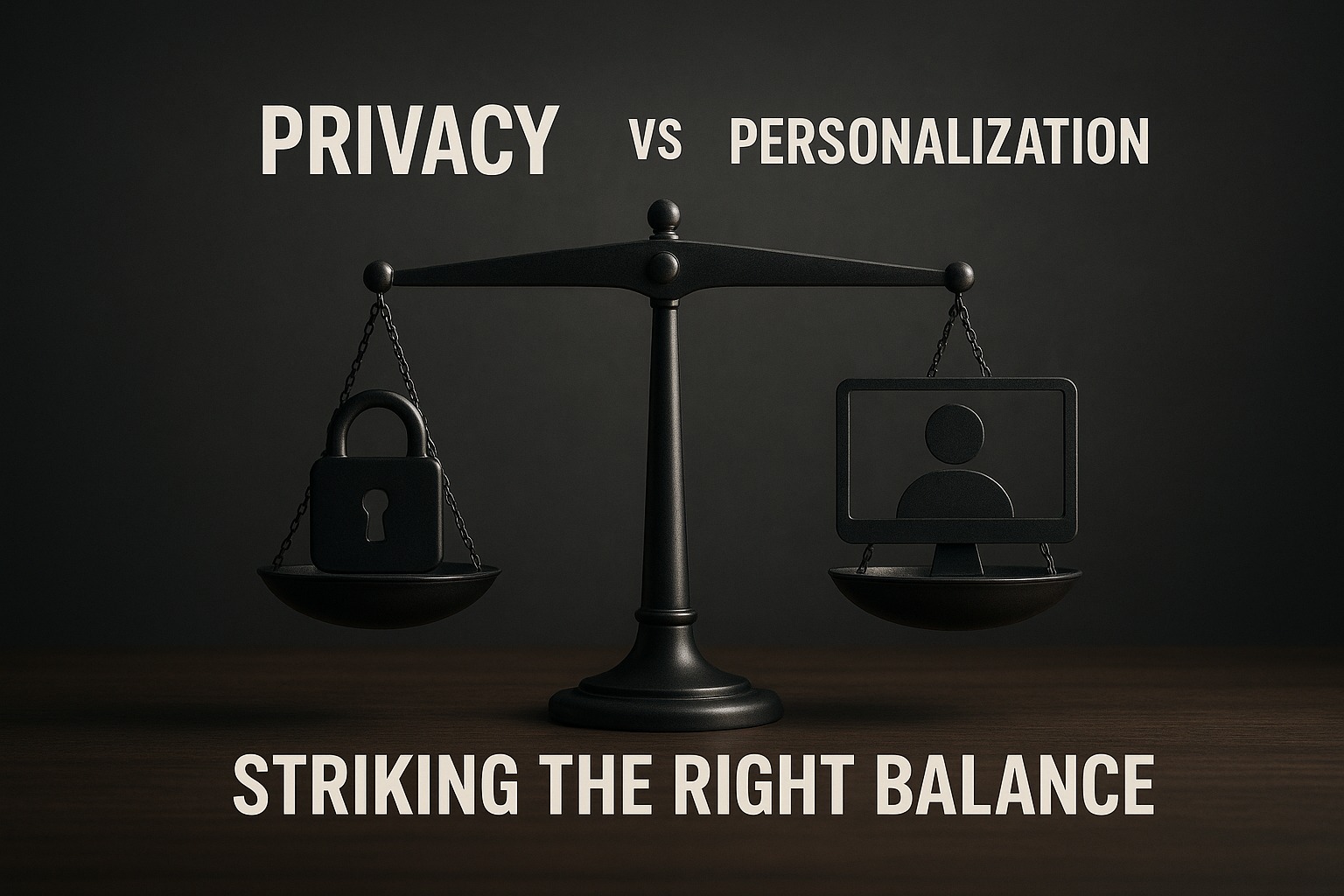Privacy vs. Personalization: Striking the Right Balance
-By Aparna Mitra, 23rd February,
2025

In today’s digital landscape, businesses rely heavily on personalized experiences to engage consumers. From targeted ads to recommendation engines, personalization has become a crucial tool for customer retention and satisfaction. However, these tailored experiences often come at the cost of data privacy. With increasing global privacy regulations and consumer awareness, businesses must navigate the fine line between personalization and privacy to maintain trust and compliance.
The Importance of Personalization
Personalization enhances customer experience by providing relevant content, product recommendations, and seamless interactions. Businesses use consumer data, including browsing history, purchase behavior, and location, to tailor their services. According to studies, personalized marketing can significantly improve engagement and conversion rates, benefiting both consumers and businesses alike.
The Privacy Concerns
While personalization can be beneficial, excessive data collection and tracking raise serious privacy concerns. Consumers are becoming more aware of how their data is being used and demand greater control over their information. Data breaches, unauthorized tracking, and intrusive targeted ads have led to growing skepticism about how companies handle personal data.
Regulatory Landscape
Privacy laws such as the General Data Protection Regulation (GDPR), California Consumer Privacy Act (CCPA), and other emerging regulations enforce strict guidelines on data collection, consent, and usage. Businesses must ensure compliance by implementing transparency, allowing users to opt-in or opt-out of data collection, and adopting privacy-focused
strategies.
Recommended Practices for Balancing Privacy and Personalization
- Consent-Driven Personalization – Provide clear opt-in mechanisms for consumers to choose what data they are willing to share.
- Data Minimization – Collect only the necessary data required for personalization and avoid excessive data harvesting.
- Anonymization & Encryption – Use techniques such as data anonymization and encryption to protect user identities.
- Transparency & Control – Offer consumers easy access to their data preferences, allowing them to manage or delete their information.
- AI & Edge Computing – Utilize privacy-enhancing technologies like federated learning and on-device processing to reduce data exposure.
- Compliance-First Approach – Ensure that data handling practices align with global privacy laws and industry standards.
Finding the right balance between privacy and personalization are essential for businesses to foster trust and remain compliant with evolving privacy laws. By prioritizing consumer consent, minimizing data collection, and leveraging privacy-enhancing technologies, companies can deliver personalized experiences without compromising user privacy. As digital landscapes continue to evolve, businesses must stay
proactive in adopting ethical data practices to sustain long-term customer relationships.






